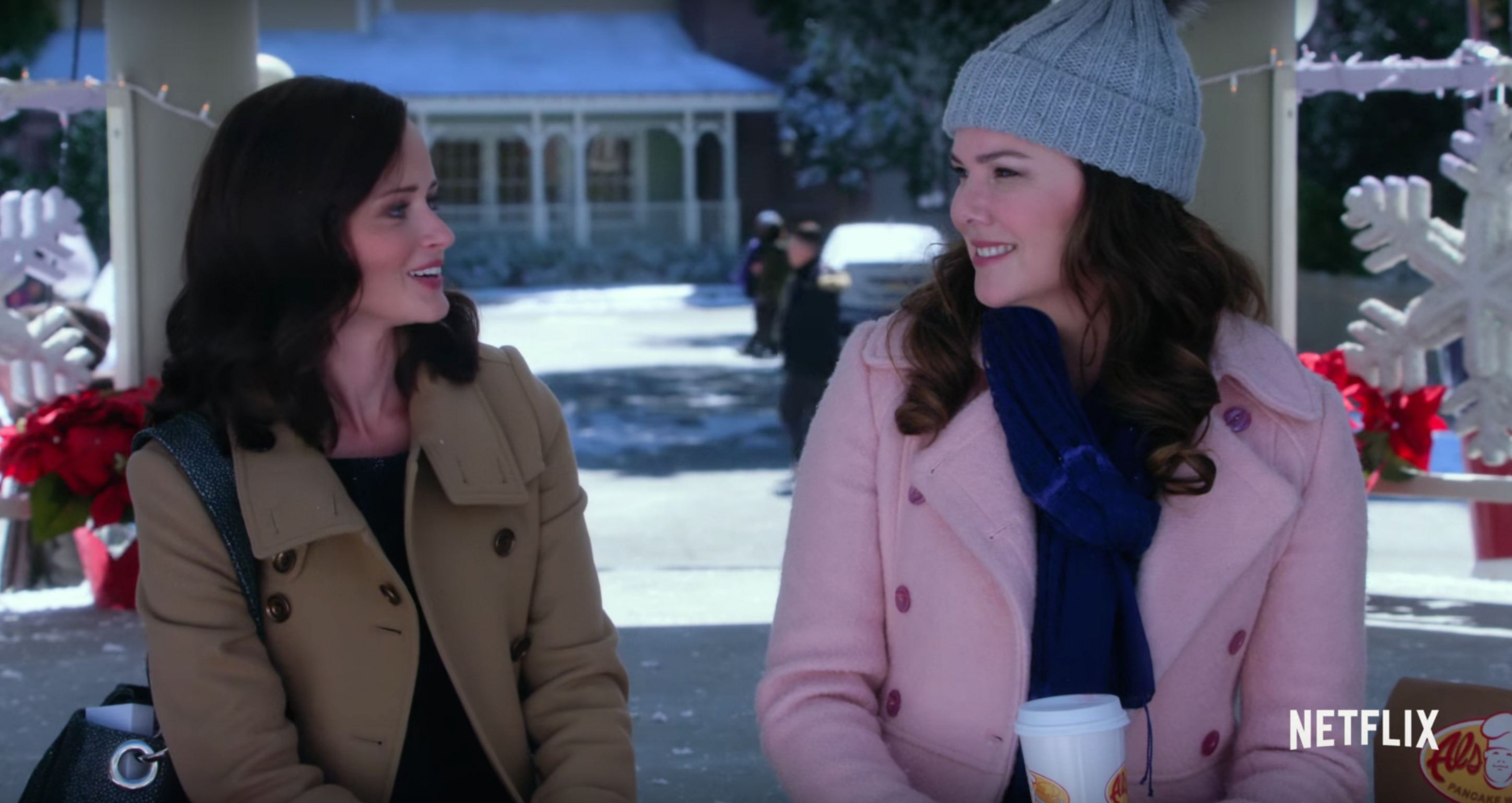Gilmore Girls and My Feminist Awakening

Image by Netflix US & Canada via Youtube / CC BY 2.0
“Gilmore Girls” returned with 4 new episodes on Netflix on November 25th, a saving grace from my personal drought of good shows to watch on Netflix. The last episodes of “Gilmore Girls” aired in 2007, but within the past few years, I have watched and rewatched the show in its entirety.
I’ve also done this with another old favorite, “Scrubs,” which features a scene where two main characters, JD and Turk, anxiously discuss “Gilmore Girls” while it airs. While I love “Scrubs,” it struck a chord with me that the punch line in this scene was the hilarity that two men could enjoy and discuss such a show – a show that is dominated by women. These men couldn’t possibly want to watch a show about women, right? This realization brought me back to an adage that I’d unconsciously taught myself: men don’t want to watch movies about women. Female-dominated movies which touch upon traditionally feminine themes (for example, romance) are dubbed chick flicks and not taken seriously in either an artistic or commercial sense. When female narratives don’t fall into this category of “chick flicks,” instead of being ridiculed, they are simply forgotten flops.
“Gilmore Girls,” perhaps excluding its first season, was anything but a flop. It succeeded while centering around the uncensored, everyday lives of Rory, Lorelai, Emily, Suki, and Lane. For those who are just now tuning into the show, “Gilmore Girls” follows the lives of Lorelai and Rory Gilmore, a single-mother and daughter duo who live in Stars Hollow, Connecticut. The storyline focuses on their journey through Rory’s high school and university experience, with a full cast of small town compatriots. These stories about love, culture, friendship, literature, education, and travel all center around women who are not always perfect or even extraordinary. Many are not even likable; they make plenty of mistakes that frustrate even an avid fan, such as myself. Nevertheless, they are all lovable.
Personally, the show still gives me warm and fuzzy feelings of nostalgia, and it took a long time for me to realize why that was. With “Gilmore Girls,” I have been rationed some (if imperfect) positive female representation. Years have now passed, and when I look back on Gilmore Girls, I can still see how its feminist subtleties impacted me long before I knew just how important representation could be.
For those who might doubt the feminist power of the commercial success “Gilmore Girls” has had, we can apply the Bechdel test. The Bechdel test was devised by Alison Bechdel to analyze the representation of women in film. The test asks simply whether the movie (or in this case, TV show) features two women who converse about something other than a man. It is sometimes criticized as simplistic; however, the Bechdel test gives us a general sense of women’s representation in popular culture. American media typically fails the Bechdel test, with pieces that pass far and few between. “Gilmore Girls” consistently passes this test within the first few minutes of each episode – and for that, the show revolutionizes the way that network television tells women’s stories. Since it first aired, American media has seen more female-centered TV shows become successful, including such hits as “Broad City,” “Jane the Virgin,” “Crazy Ex-Girlfriend,” and “Scandal.”
More than anything, I have been thankful that such a show has existed to highlight the beauty and power in female friendships. I do consider “Gilmore Girls” part of my own feminist awakening, as I have learned to love my female friends fiercely in a way that deconstructs notions of female friendships being “bitchy” or “toxic.” I have sought out and discovered close female friendships since. I have done so in search of shared experience, and in understanding those experiences that I do not share with my friends who are women of color or part of the LGBTQ+ community.
As most mainstream media does, “Gilmore Girls” certainly has its flaws too. Its storylines are both cis-normative and heteronormative. Racial diversity is extremely limited, with only two returning characters who are people of color. As a white woman, I must teach myself to think critically about such entertainment. After all, I notice misogyny in other shows as if each moment of oppression is marked with a glaring red flag. I have to have this same awareness for other communities which I do not claim membership in; for example, those of ethnic minorities and the LGBTQ+ community. I can consume media like “Gilmore Girls”, but considering my identity, I have to watch with the strict awareness and criticality that I ask of others as a feminist. So I watch “Gilmore Girls” enthusiastically and with a critical eye because, as in the words of Roxane Gay in “Bad Feminist,” “I would rather be a bad feminist than no feminist at all.”
From “Gilmore Girls,” we find empowerment, with recognition of where we have come from, and an indication of the long way that we still have to go.




